#rko army
Explore tagged Tumblr posts
Text
RKO Army coming in hot for next year!
Join fellow Rocky Horror Picture Show fanatics July 30 - August 2, 2025 in Providence, RI for the 50th Anniversary hosted by RKO Army.
Get ready to celebrate the Golden Anniversary of the iconic cult classic with fellow fans from around the world.
Experience multiple shadowcast productions put on by our all star casts, panels, workshops, parties, our unique vendor room, and more during our multi day event. Prior conventions have included performances of Repo the Genetic Opera, The Room, Shock Treatment and Rocky Horror (of course).
Buy your ticket and find additional information here
#rhps#rockyhorror#rkoarmy#rocky horror#rko army#rirocky#rockyhorrorpictureshow#therockyhorrorpictureshow#rocky horror picture show#rhps50#providence#rhpsconvention#Rocky horror convention#rkocon#pvd
17 notes
·
View notes
Text
youtube
The RKO Army Pre-Show: Born This Way
Performed before our Pride Themed Shadowcast of the Rocky Horror Picture Show 🏳️🌈🏳️🌈!
#rhps#RKO Army#shadowcasting#gaga#lady gaga#born this way#rocky horror#pre-show#pride 2023#pride#Youtube
3 notes
·
View notes
Text
have you heard of this thing called genco

15K notes
·
View notes
Text


I can’t unsee how similar these two look 😂
#randy orton#rko#azog the defiler#azog#the hobbit#wwe#jrr tolkien#tolkien#the hobbit an unexpected journey#the hobbit desolation of smaug#the hobbit battle of the five armies#wrestling
16 notes
·
View notes
Text
Constance Bennett - The Hollywood Fox
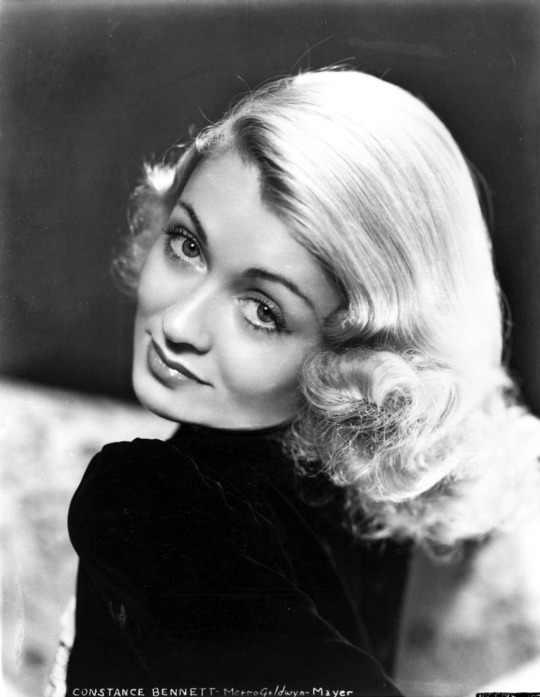

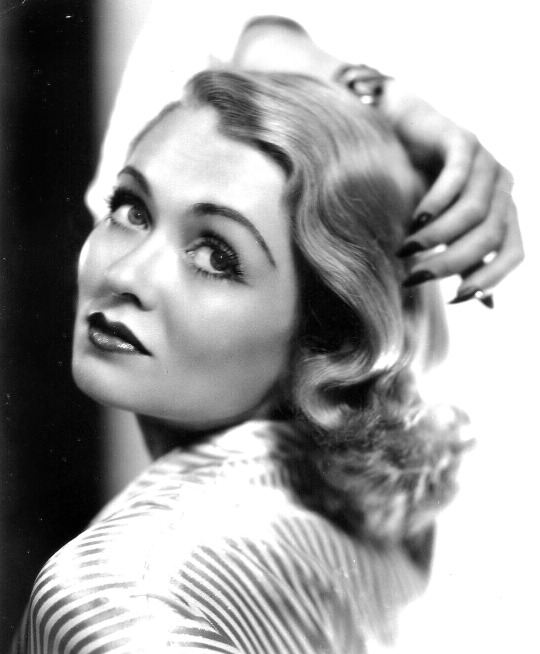
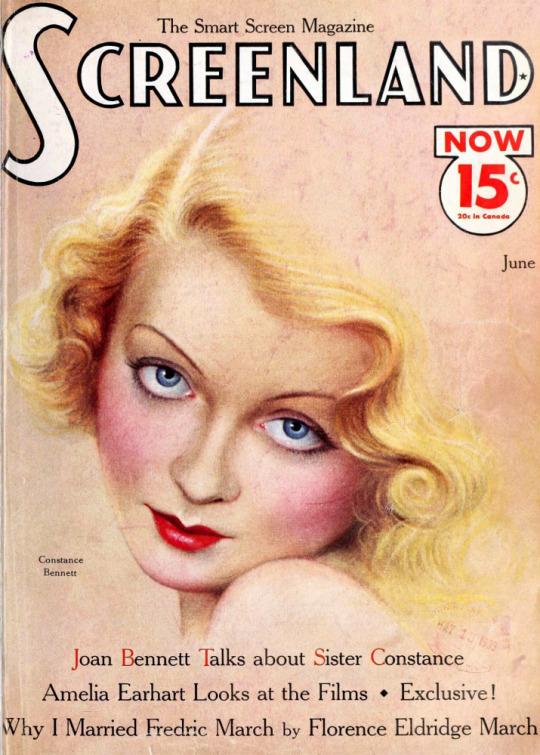
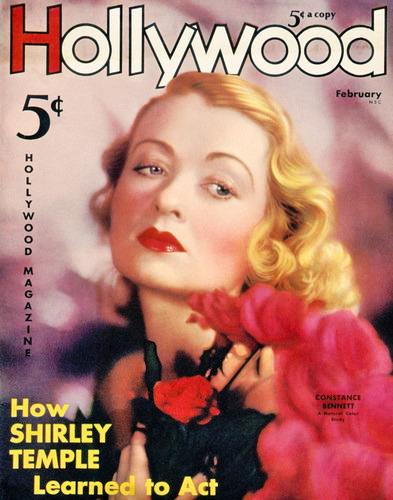
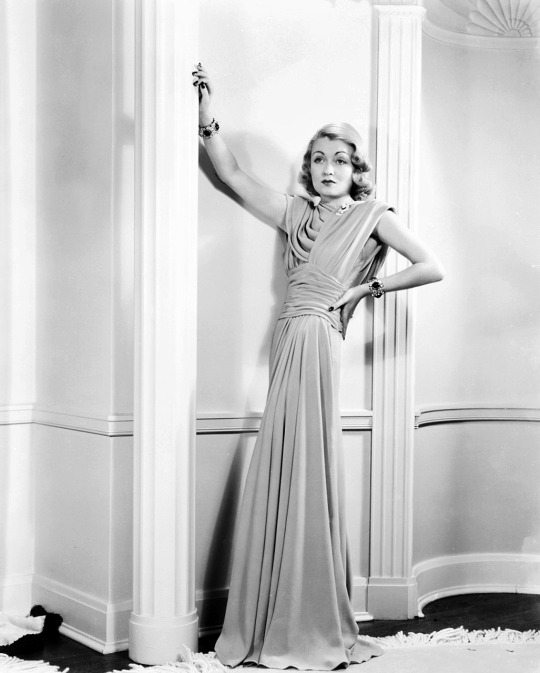
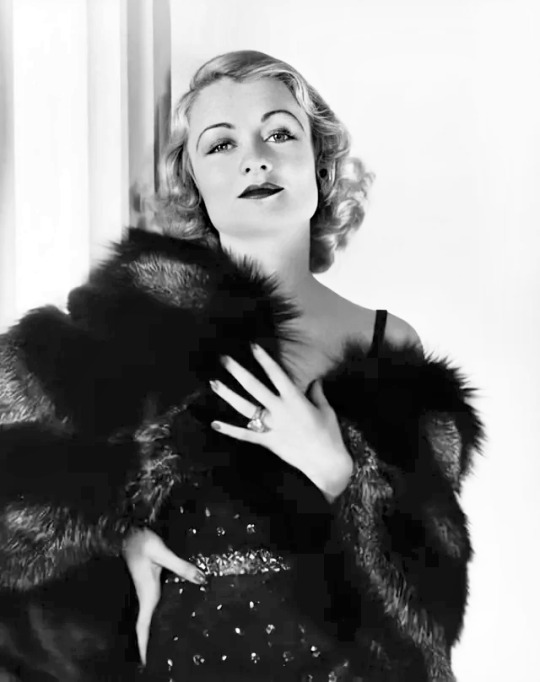
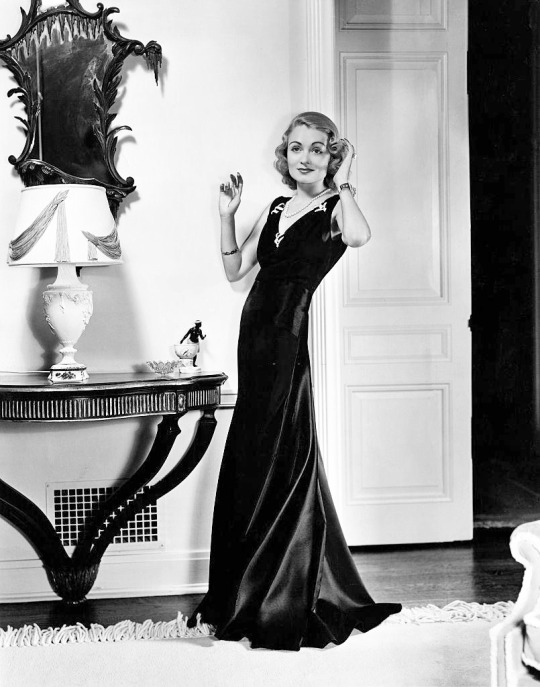
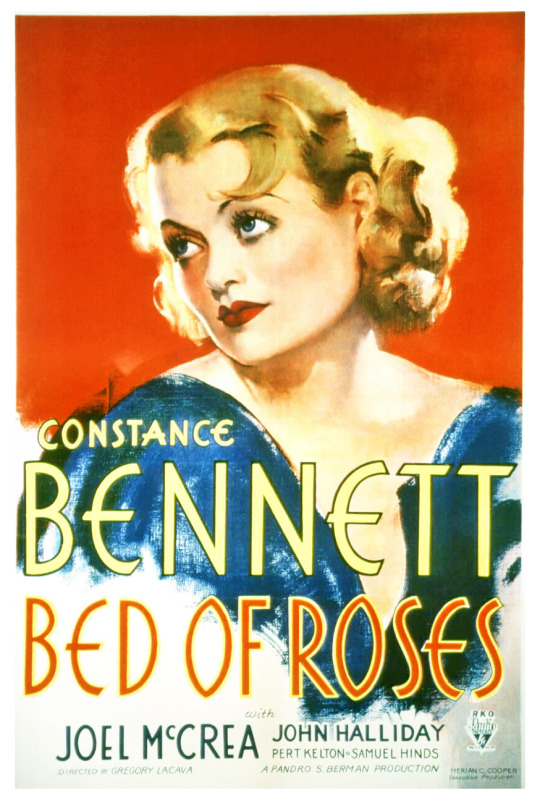
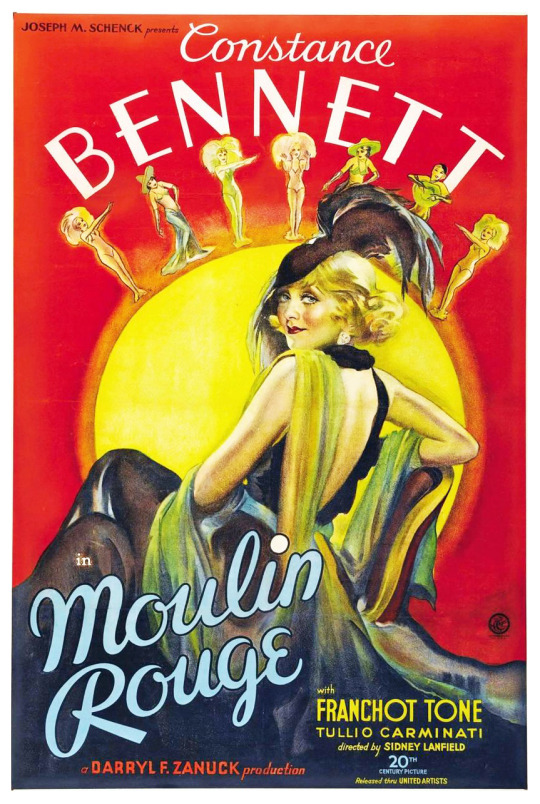
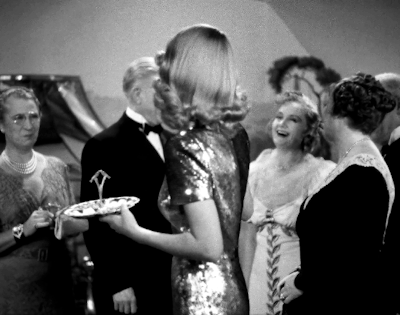
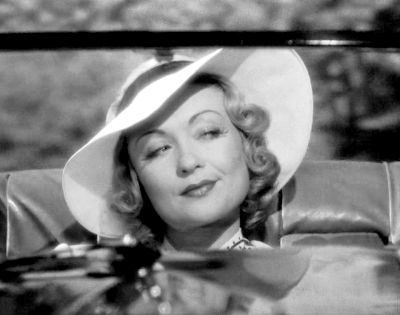
Constance Campbell Bennett (born in New York City on October 22, 1904) was an American actress born to an aristocratic family of actors of English and Spanish ancestry. She glided through Hollywood with a sprite-like lightness and definite air of style and sophistication, receiving the moniker, "The Hollywood Fox."
The eldest of three daughters of actress Adrienne Morrison and actor Richard Bennett, she attended the Chapin School in New York along with her sisters Joan Bennett and Barbara Bennett. She was first Bennett sister to enter motion pictures, appearing in New York–produced silent movies before a meeting with Samuel Goldwyn led to her Hollywood debut in 1924. She took a hiatus during a brief marriage, but resumed it after her divorce.
In the early 1930s, Bennett was frequently among the top actresses due to hits like Topper (1937). Her contracts with Metro-Goldwyn-Mayer, Warner Brothers, and RKO made her a big star in Hollywood, and her cutthroat contract negotiations earned her the sole female spot among Hollywood’s poker-playing elite comprised of top movie moguls.
By the 1940s, Bennett was working less frequently in film but was in demand in both radio and theatre, and she also formed her own production company, Constance Bennett Pictures, which produced two films. Nonetheless, shrewd investments made her a wealthy woman, even founding a cosmetics and clothing company, called "Fashion Focks."
Shortly after Madame X (1966) was completed, Bennett collapsed and died from a cerebral hemorrhage at the age of 60 in Walston Army Hospital at Fort Dix, New Jersey. In recognition of her military contributions, and as the wife of John Theron Coulter, who had achieved the rank of brigadier general, she was buried in Arlington National Cemetery.
Legacy:
Won the Photoplay Awards - Best Performances of the Month in April 1925
Was the highest-paid actress in Hollywood during the early 1930s
Founded the Constance Bennett Cosmetics Company and a clothing company called "Fashion Frocks" in the 1930s
Formed her own production company, Constance Bennett Pictures, which produced two films: Paris Underground (1945) and Smart Woman (1948)
Made smart business investments, including holding stocks in the historic Arrowhead Springs Hotel
Awarded military honors for her role in coordinating shows flown to Europe for occupying troops (1946-48) and the Berlin Airlift (1948-49)
Nominated as the Hall of Fame: Actress Award in the 1978 Photoplay Awards
Has a star on the Hollywood Walk of Fame at 6250 Hollywood Blvd for motion picture
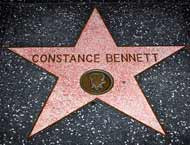
#Constance Bennet#Bennett Sisters#The Hollywood Fox#Silent Films#Silent Era#Silent Film Stars#Golden Age of Hollywood#Classic Hollywood#Film Classics#Old Hollywood#Vintage Hollywood#Hollywood#Movie Star#Hollywood Walk of Fame#Walk of Fame#Movie Legends#hollywood legend#movie stars#1900s#28 Hollywood Legends Born in the 1900s
25 notes
·
View notes
Text
Vietnam Vets Launch Film Assault
“The Platoon” recently finished filming. So did “Full Metal Jacket,” a Stanley Kubrick film adapted from the novel “The Short-Timers.” “84 Charlie Mopic” may start shooting in August or September. “Hamburger Hill” will start in October.
All are about the Vietnam war. It’s unusual to have four such films in the works at one time. What really makes them unique, however, is that all were written--or in one case, based on a novel--by men who served in the war.
Vietnam vets have written many plays and books based on their experiences. But none wrote the two Vietnam film hits of the ‘70s--”Apocalypse Now” and “The Deer Hunter.” No vet, either, wrote the current crop of heroic, explosive revenge-and-rescue films typified by “Rambo, First Blood: Part II.”
Why so long for veterans to have their say in film? The four now getting that chance have varied theories, ranging from studio fears of no mass audience for serious Vietnam films to a lack of influence by Vietnam vets in Hollywood.
The lack-of-clout theory is offered by Patrick Duncan, whose “84 Charlie Mopic,” a Sundance Film Institute project, shows the war cinema verite -style via an Army combat cameraman accompanying a long-range patrol in South Vietnam’s Central Highlands.
“I don’t think many veterans are in any kind of power here,” he says. He may be right. A random Times survey of studios failed to turn up one. (“I think you’ll find a lot of old (Vietnam) protesters, but not any vets,” said one studio secretary.)
‘It’s purely a commercial problem,” says Gustav Hasford, a former Marine combat correspondent whose novel about the battle for Hue in 1968 became Kubrick’s “Jacket.”
“Vietnam was not a commercial subject for a long, long time,” says Hasford, the only one of the four veterans-writers who doesn’t want a career in Hollywood. He’s working on his second Vietnam novel--in which his main character from “The Short-Timers,” a Marine correspondent turned rifleman, gets captured by the Viet Cong, then joins them.
Interviewed by phone from Perth, Australia, where he now lives, Hasford said that the passage of time is the reason why the three other veterans now have the chance to tell their Vietnam stories in film.
“I attribute it to the fact that Vietnam’s so far away now . . . you don’t have the knee-jerk reaction to it that hawks and doves did back then,” he said. Still, “not commercial” was the refrain heard by Oscar-winning Oliver Stone, author and director of “Platoon,” and James Carabatsos, who wrote “Hamburger Hill.” Both of their scripts are about the young draftees who fought in Vietnam.
Carabatsos has strong opinions about the not-commercial argument, which he says he kept getting until March, when RKO Pictures agreed to back his film.
He thinks this explanation is due to a hoary mind-set that the men who fought the war became deranged, haunted, drug-addled psychotics.
Past films have fueled it, he says. “You never see a movie about the guys running medcaps”--field medical clinics for Vietnamese villagers--”or doing anything good. It’s all depravity, and I think this is to justify the (anti-war) beliefs of the people who didn’t go.”
He wants to rebut that stereotype with his movie, he says, to show the good as well as the bad done by young Americans, to tell both sides of the story, to say “there was good and bad. But there was not a My Lai every day.”
Stone also wants to tell it the way he saw it, as a war within a war, the Left versus the Right in the Army that was fighting the Vietnam War.
He thinks that “Apocalypse” and “Deer Hunter” were superb films, but really were “about the state of mind at the time of Vietnam--the darkness, the civil war, the conflict between Americans. I would hope also to explore those corners.
“But I would like to explore the everyday realities of what it was like to be a 19-year-old boy in the bush for the first time.”
When he first showed his script around in 1976, he says, many in Hollywood liked it but thought it too much of a “downer,” too dark, too depressing. That it finally got financing last year was in no way due to Hollywood or the mega-success of “Rambo,” he says.
“Naw, they (Hollywood studios) would go the other way--they want to make a right-wing movie,” asserted Stone, adding that his “Platoon” is far from that.
(In “Rambo,” Sylvester Stallone, while rescuing American prisoners of war, personally kills at least 60 North Vietnamese soldiers, 22 Russians and eight river pirates who try to turn him over to the North Vietnamese.)
“The only reason my film is being done is because a British company”--Hemdale Film Corp.--”happened to like me, happened to like ‘Salvador.’ ” He was referring to his recently released, Hemdale-backed film about a journalist covering the war in El Salvador.
His “Platoon” will be out long before that of Carabatsos even reaches the film editors’ desks. But Carabatsos says he isn’t worried.
“I’m ecstatic for Stone because it’s obviously been as much of a burr in his side as it has been in mine,” he says. “I’m just tickled that veterans are making movies about their experiences.”
Duncan, echoing a thought also expressed by Carabatsos, says he wants his film not only to show what one part of the war was like, but also “to show what was of value for the guys who fought the war. . . . I want people to care. I want them to understand why the guys did what they did.”
And that, he says, really is his intent and that of other veterans-turned-screenwriters: “We have a brotherhood, a greater loyalty to them (other veterans) than we do to other people. We owe it to them.”
-The Los Angeles Times, May 26 1986
0 notes
Text
this is exactly what the frank I just saw perform looked like eek (rko army but it wasn't the normal cast cause of april fools so idk the actor :( )

Frank .. Frankie...💋✨
2K notes
·
View notes
Text
Shadows & Scandals: How Chaos Birthed Hollywood’s Darkest Film Noirs
Introduction Film noir is synonymous with shadows, moral ambiguity, and femmes fatales—but behind the camera, the genre’s gritty allure was often forged in chaos. From murderous actors to guerrilla filmmaking and censorship battles, the stories behind these classics are as twisted as their plots. Grab your trench coat and cigarette lighter as we dive into the madness that birthed Hollywood’s most iconic noirs, complete with rare photos and clips that bring these tales to life.
1. Detour (1945): The $20,000 Masterpiece of Desperation
youtube
Edgar G. Ulmer’s Detour is the ultimate example of turning limitations into art. Shot in 6 days with a budget so low actors wore their own clothes, the film’s claustrophobic dread was born from necessity. Lead actor Tom Neal, who later murdered his wife’s lover in real life, brought an eerie authenticity to his role as a hitchhiker spiraling into doom. Watch the fog-drenched highway scene where Ulmer masked cheap sets with shadows here.
2. Gun Crazy (1950): The Bank Heist Shot Like a Crime
youtube
Director Joseph H. Lewis filmed Gun Crazy’s iconic single-take bank robbery with a camera hidden in a convertible, using real streets and unwitting bystanders. Peggy Cummins and John Dall performed their own stunts, including a carnival shooting sequence with live ammunition to capture genuine terror. See the daring heist scene here.
3. The Big Combo (1955): Torture by Hearing Aid
youtube
To bypass strict censorship, director Joseph H. Lewis implied a brutal torture scene using only a hearing aid’s screech and the victim’s contorted face. Cinematographer John Alton’s stark lighting turned empty soundstages into labyrinths of paranoia. Hear the infamous hearing aid scene here.
4. Robert Mitchum’s The Big Steal (1949): High on Noir
Mid-shoot, Robert Mitchum was arrested for marijuana possession. Studio RKO turned the scandal into a marketing ploy, while director Don Siegel scrambled to shoot around Mitchum’s court dates. The actor’s laid-back menace became the blueprint for antihero cool. Watch Mitchum’s devil-may-care performance here.
5. D.O.A. (1950): A Dead Man Directing
youtube
Edmond O’Brien plays a man solving his own murder after being poisoned—a metaphor for the film’s production. Director Rudolph Maté shot in real L.A. locations with natural light, racing against sunset and O’Brien’s intentionally worsening health. See the film’s frenzied opening here.
6. Touch of Evil (1958): Orson Welles’ Studio Nightmare
youtube
Orson Welles’ noir masterpiece was gutted by Universal, who reshot scenes and slashed his budget. Yet the legendary 3-minute opening tracking shot—filmed with a handheld camera and hidden extras—remains one of cinema’s greatest feats. Marlene Dietrich even bought her own thrift-store sequins for her role. Watch the iconic opening here.
7. Kiss Me Deadly (1955): The Mystery of the Glowing Box
youtube
The apocalyptic “whatsit” box that ends Kiss Me Deadly was a budget-saving accident. Director Robert Aldrich couldn’t afford special effects, so he left the box’s contents ambiguous—a decision that inspired Pulp Fiction’s briefcase. Witness the bizarre finale here.
Behind the Curtain: How Noir Defied the Odds
Censorship Dodges: From hearing-aid torture to implied affairs, filmmakers weaponized subtlety.
Lighting Alchemy: Cheap klieg lights and fog machines turned empty rooms into psychological battlegrounds.
Scandal as Marketing: Studios leaned into actors’ real-life crimes to sell tickets.
Conclusion: Noir’s Legacy of Creative Chaos Film noir’s shadowy beauty wasn’t just style—it was survival. These films prove that genius thrives under constraints, and sometimes the darkest art comes from the messiest productions. As Orson Welles once said: “The enemy of art is the absence of limitations.”
Want more? Dive into these noirs on Criterion Channel or YouTube Classics.
(Note: Video links are to publicly available clips for educational purposes. Images sourced from Wikimedia Commons and Fair Use archives.)
1 note
·
View note
Text

200 Films of 1952
Film number 154: A Girl in Every Port
Release date: January 8th, 1952
Studio: RKO
Genre: comedy
Director: Chester Erskine
Producer: Irwin Allen, Irving Cummings Jr.
Actors: Groucho Marx, William Bendix, Marie Wilson, Don DeFore
Plot summary: Two hapless sailors get tricked into buying a worthless racehorse named Little Aaron, but when they discover it actually has a talented twin named Little Shamrock, the scheming begins.
My rating (out of 5 stars): **½
This one had a very talented cast and a very poor script, leading to an unfunny movie with some entertaining bits thrown in. I could watch Marx, Wilson, and Bendix in most anything, but it was sad to see their gifts wasted on a film like this. It could have been so much better.
The Good:
William Bendix, the well-known gifted character actor, was the highlight for me. The writing let him down a lot, but he is able to play idiots in a charming way, even when the jokes are tired and obvious.
Marie Wilson. She was the reason I wanted to see this movie, because I loved her on the radio show My Friend Irma. Like Bendix, she can somehow still be likeable and cute playing airhead roles even if the writing is bad. Her role in this did her absolutely no favors, but she was always fun to watch. She has such a distinctive voice and really knows how to deliver a line.
The waitress outfits in the drive-in scenes. Hawt as hell!
The Bad:
Why that title? There were very few girls in the film, there was only one port, and none of the male characters were particularly amorous. A Mare in Every Port would have been a better title, even though it’s incredibly lame! Anchors A-Neigh? I could keep going...
The film was tragically unfunny- I mustered a chuckle twice, but I never laughed. The jokes were hackneyed and predictable with lots of vanilla tropes. The cast and hijinks made it at least somewhat engaging, but if you want a laugh riot, this is definitely not it!
I almost always enjoy Groucho Marx, but it really felt like he just dialed this one in.
Here we have another totally unrealistic depiction of the Navy/Army! Just like other films on my 1952 list, sailors and soldiers seemed to have loads of free time for fun and romance! The only work we ever saw Bendix and Marx do was peeling potatoes in the opening scene. It makes the Armed Services look like hang out time at a summer camp!
The ending was so ludicrous, I couldn’t suspend any disbelief for a laugh. It honestly just annoyed me.
Why didn’t we get a shot of the romantic couple reuniting at the end? The film spent a good deal of time on the romance, but we never saw them in the same frame for the entire final sequence!
There was a horrible side plot with Marx and Bendix's Admiral- the two sailors drove him to literal madness. It was aggressively unfunny and somewhat disrespectful. What kind of Navy would put someone like him in charge?
Marx was less fun without his brothers and without any music. I’m sure it was the material, because he was always amusing on You Bet Your Life, but still...
0 notes
Text
Satisfying RKO 😮💨🤌 #WWEBacklash
So he hits me and I wasn't ready for it but I'm screaming and yelling like an idiot and we do it all the time and these Max go after us and that's one of their things and I look like an idiot cuz I'm being one and they're saying something and it's on a black box or something on the ship hit our head on the ship I don't know what it means and he's saying it getting a shout it out and it might be about what's in the ship and we get that but he knocked me out and it's a Mac and they're planning on doing that and taking the shifts this guy's getting nervous that's why he's getting more ornery and not much on like Trump but they're not the same people and people think it is no laughing and I'm thinking you can be really stupid we could be really doomed but he's going to talk he's going to stop them somehow he has all these tricks and they don't care I'm bunch of arrogant swine and really the guys wearing the iron Cross Jesus Christ this is really awful he looked up to them and now they're short and they know about the bugs and they can't contrary with the chemical it's terrible I know who they are they are an actual man
Famous cologne you'll see here yeah that's me
We don't have any time for this but really they are Max triple h and our Max and they're yelling at these girls and the second time it was Trump's daughter it's like cover and we do see they're yelling at these people but we hear what our son and daughter are saying we can't let it happen we don't have a great plan to stop it he's out of control all the time and we're not able to do it we need raw horsepower we need our armies and this will raise both and we're going ahead with
Thor Freya
We're getting ready father and mother and he is in agreeance but we see your argument and it's good and it's really true. We don't want our people to roast and have to develop their power and just sit there move around and protect themselves and kill a whole bunch of jerks all the time as a family and it's really bad. This is going to even it out and we have reports and we do hear it and we go back and forth and it's not much we just get a lot of help this is going to be hell but we're up there and it's working and we did see the shirt and it was worn by or Steve Martin and he doesn't know about it but that's what we're saying it's like Steve Austin and Steve Martin and it is awesome but the max are saying it about triple h and Steve Austin so we have a comeback no now they're saying not in response they had posted it but really they're trying to trick us to think it was which is odd no that's normal for them anything she does yeah progress is good we're ahead of schedule and we must be we're raising others burning man should be ready soon enough we need to speed it up he says everything is always Dan behind I'm tired of damn behind and we can get something in there and we're going to ask for permission
Savage opress
We thought you'd be asking and we do have a bunch of those stupid things up there and we need them out and we plan to do it later but we do see what you're saying having all these fights in the fish are getting ruined so we're going to go ahead and do it it's not wet but we know what we're doing
Thor Freya
Olympus
0 notes
Text


You have 9 chances spread across New England to catch The Rocky Horror Picture Show and Thriller with us!
Get your tickets here 🧟♀️
#rhps#rockyhorror#rkoarmy#rockyhorrorpictureshow#rocky horror#therockyhorrorpictureshow#rocky horror picture show#rirocky#rko army#marocky#providence#pvd#ri#thriller#michaeljackson#the stadium theatre#Mendon drive in#ctrocky#Lincoln cinema world
9 notes
·
View notes
Text
In His Last Radio Interview John Lennon Said That He Comes From The Macho World Of Pretense, Quoted In The Nation Article Lennon's Last Interview:The Sixties Showed Us The Possibilities
John himself said in his very last radio or any interview,that he came from the macho school of pretense and he said he knows it's more like this in England, but it's like this in America too, that as a boy you were mainly trained to be in the army, and you were taught not to cry,not show emotions,don't touch,don't feel,don't react and John said he thinks that's what screwed us all up and that it's time for a change.
In the great article in The Nation,Lennon's Last Interview:The Sixties Showed Us The Possibility by Jon Wiener, he said in John's last radio interview by Dave Sholin of RKO Radio (and this was hours before John was tragically killed by the one time big Beatles fan since he was 11,and John had been his favorite Beatle) Dave asked John about feminism and John said, ''I'm more feminist now than I was when I sang Woman Is The N**ger Of The World.''
In this article John is then quoted saying,' 'Isn't it time we destroyed the macho ethic? Where has it gotten us all of these thousands of years? Are we still going to have be clubbing each other to death? Do I have to arm-wrestle you to have a relationship with you as another male? Can we not have a relationship on another level?''
Also this great article by long time anti-sexist,anti-men's violence,anti-pornography educator former all star high school football player and author of the great,important 2006 book,The Macho Paradox:How Some Men Hurt Women and How All Men Can Help, Jackson Katz.John Lennon on Fatherhood,Feminism,and Phony Tough Guy Posturing
0 notes
Text
'In the third act of Oppenheimer, the father of the atomic bomb sits in a darkened hall and watches a slide show of what his gadget hath wrought at ground zero. From offscreen space, the lecturer clinically describes what we in the audience are spared from looking at.
The decision by director Christopher Nolan not to show the Japanese victims that should be in Oppenheimer’s field of vision has been both roundly criticized (Brandon Shimoda, curator of the Hiroshima Library, called it a “demoralizing” absence that “makes unreal the experience of Asian people”) and stoutly defended (in The Los Angeles Times, film critic Justin Chang responded, “omission is not erasure”).
Whatever your take, Nolan’s political/aesthetic choice presumes viewers are unspooling the pictures in their own mind. Compared to the newsreel record of the Holocaust, the visual imprint of the victims of Hiroshima and Nagasaki has not been seared as indelibly into the popular imagination. For most of the Cold War, the motion picture evidence of the impact of atomic weaponry on humanity was memory-holed by squeamish media gatekeepers and restricted by the U.S. government. Only a few glimpses slipped through the cracks.
In 1945, Americans should have seen the victims of the atomic bombings in the newsreels, the screen journalism of the pre-television, pre-digital age. Throughout the classical Hollywood era, the newsreels were an integral part of what exhibitors called “the balanced program,” playing at the top of a film menu that included a cartoon, a comedy short, and a feature-length attraction. Five studio-affiliated newsreels released two issues per week, each running about eight to 10 minutes in length: MGM’s News of the Day, RKO’s Pathé News, Fox Movietone, Universal Newsreel and Paramount News.
When the atomic bombs were detonated over Hiroshima (Aug. 6, 1945) and Nagasaki (Aug. 9), newsreel editors were caught flatfooted. Of course, they were given no prior notice of the use of the top-secret weapon, but the military had prepared elaborate press releases for newspapers and radio (CBS broke in with a bulletin at 11:15 a.m. on Aug. 6, NBC two minutes later). The newsreels scrambled to play catch up. Camera crews descended on the sites revealed to have played the key roles in the Manhattan Project — Oak Ridge, Tennessee; Richland, Washington; and Los Alamos, New Mexico — but they were forbidden access by still-wary authorities. Not until Aug. 21, 1945, did the military provide some 80 feet of film (close to a minute) of the atomic bomb blast at Trinity on July 16. “The explosion, the greatest to be caused by mankind in all history — up to the time the two atomic bombs were dropped on Japan — makes one of the most spectacular screen scenes ever filmed,” said Showman’s Trade Review.
On Sept. 15, the first films of what News of the Day called “atom-bombed Japan” finally reached newsreel screens. The footage showed the flattened landscape of Hiroshima, more obliterated even than Berlin and Tokyo, first from the aerial perspective of a B-29 and then from the ground, where a few Japanese civilians walk dazed through the ruins. The narration is blunt about the scale of the devastation and the number of causalities, but no images of the dead and wounded are screened. “Latest reports from the Japanese say 126,000 died as a result of the damage done by the single bomb that blasted the city,” reported Universal Newsreel announcer Ed Herlihy. “For many days after the actual bombing, thousands continued to die of burns and shock.”
Universal credited the footage to commercial newsreel and Army Air Force cameramen, but Japanese camera people were also on the scene in the immediate aftermath of the blasts documenting the backfire on their countrymen. They took some two hours and 40 minutes of motion picture footage, all of which was confiscated by U.S. Occupation forces. According to Edith Lindeman, film critic for the Richmond Times-Dispatch, writing in 1946, “the pictures were developed and readied for general consumption,” but government and military authorities soon had second thoughts. “Shots of dismembered bodies, piles of dead animals, and [of] a man whose body had been blown flat into a concrete road where it was imbedded by the blast” were so appalling that officials feared that American public might withdraw support for the testing of future atomic bombs.
A year later, however, on the first anniversary of the blasts, the U.S. government had third thoughts and released the footage to the newsreels. The newsreel editors were not unanimously receptive. Three of the outfits — News of the Day, Pathé and Fox Movietone — deemed the footage “too gruesome” to show to moviegoers settling in for an evening’s entertainment. Only Universal Newsreel and Paramount News opted to use the footage.
That same week, the military also released footage of the underwater atomic test near Bikini Atoll in the Marshall Islands, conducted on July 25, 1946, an awesome spectacle documented by 300 cameras (and later repurposed by Stanley Kubrick at the end of 1964’s Dr. Strangelove). The back-to-back coupling of the two segments — Bikini and Hiroshima, the shape of things to come followed by the human fallout — made for a grim all-atomic episode. Usually, the newsreels tried to soften even the harshest news at the top of the issue with a back-end clip of fashion or sports. Not this week.
The Universal Newsreel segment incorporated scant seconds of the Hiroshima victims, but Paramount lived up to its slogan as “the eyes and ears of the world.” The nine-minute issue (“Atom Bombs!” is the exclamatory title) devotes about half its running time to an unblinking look at the Japanese victims. (The news reel of Paramount News issue 99 is not currently available online; I viewed it with the help of multiple archivists...)
“One year has passed since the first atomic bomb changed the course of civilization,” reads the introductory title card. “This film report — of pictures just released from Hiroshima and the underwater Bikini test — highlights the new world crisis unleashed by the most terrible destructive force in history.” Offscreen narrator Maurice Joyce, the voice of Paramount News, takes over with an awed after-action report on the Bikini blast, noteworthy not just for the frame-filling, ballooning mushroom cloud (shown twice, from two different camera angles) but because the clip allots a full 30 seconds of tension to counting down the moment of detonation. Sailors aboard ships anchored near ground zero would have met “a terrible atomic death,” he says, a remark that serves as a transition to what “one year ago swept down on Hiroshima.”
The shift to “Hiroshima, August 6, 1945” is signaled by the clang of a Shinto temple gong on the soundtrack. First, we see a peaceful modern city before the blast and then a postapocalyptic vista of rubble. “This is how Hiroshima looked after the blast. Four and a half square miles almost completely burned out.”
The final title card asks the question of the moment: “In light of these shocking films, the world faces a life-and-death question: CAN WE CONTROL ATOMIC POWER?”
Engaging in the kind of overt editorializing that the newsreels almost always avoided, Joyce demands an answer. Yet even with the stakes being nothing less than the future of mankind, politicians remain “deadlocked” and “the same old balance of power maneuvering continues.” At the close, the clip reprises the images from the Bikini explosion and Joyce signs off with a warning, “Unless there is complete agreement on the bomb, we may as well build our cities under the Earth and get ready for armageddon.”
The commentary was written by Paramount editor and future Time magazine film critic Weldon Kees, who felt he had done a good job of work that day. The newsreel “with the Bikini test and the Japanese films turned out amazingly well,” he wrote his parents back in Beatrice, Nebraska. “It is no doubt one of the best newsreels ever released.”
Senior management at Paramount News agreed. On Aug. 9, 1946, the outfit invited newspaper and trade press critics to a special screening of the issue at its New York headquarters. “The screen is the only real medium that adequately brings home the horrors of the bomb and it has done so indeed in this reel,” said Curtis Mitchell, Paramount’s director of advertising and publicity. “I hope it is shown in every theater in the world.”
That kind of saturation was unlikely. Most motion picture exhibitors were locked into contracts with one of the five newsreel companies. Though not a hard and fast rule, Fox-owned and-affiliated theaters tended to show Fox Movietone newsreels and so on. Thus, Paramount’s newsreel was screened in Paramount houses and by some independent exhibitors who had the freedom to mix and match. Paramount’s unique hard news scoop was also welcomed in all-newsreel houses, a circuit of venues in the major cities that played a one-hour program composed entirely of newsreels and short documentaries. “See Casualties and Damage by 1st A-Bomb!” urged the Tele News Theater in San Francisco. The Trans-Lux Theater in New York highlighted the Paramount clips in a similarly gruesome way. Still, even if you were an avid moviegoer in 1946, chances are less than even that you would have seen the Paramount News footage.
Viewers who did see the Paramount footage were stunned and sickened. “This clip becomes a real shocker because of the previously unseen shots of the devastation wrought on human beings by the atom bomb on Hiroshima,” wrote Jack D. Grant in The Hollywood Reporter in August 1946. (Tellingly, critics often resorted to the biblical verb “wrought” to describe the atomic visitation.) “Radioactive rays burned the pattern of one woman’s dress on her skin. Others were scarred and blinded in the most hideous manner. No punches are pulled in showing any part of the devastation. There are closing shots of school children, still disfigured a full year after Hiroshima.”
At Motion Picture Daily, critic Herb Loeb was especially distraught. “The scarred, burned, and maimed people caught by the Japanese camera at the height of their anguish forms a burning indictment against the use of the atomic bomb by any civilized country,” Loeb wrote. All agreed, in the words of Chester B. Bahn, editor of the Film Daily, that the Japanese “clips belong on every screen not only in the U.S. but throughout the world as a solemn warning to all peoples that it is indeed later than they think.”
That same month, with the exhilaration of V-J Day no longer at fever pitch, other media were also reckoning with the human cost of the bombs that ended World War II. On Aug. 9, the monthly screen magazine the March of Time released a timely issue titled “Atomic Power,” a science lesson that was more cautionary than celebratory. It opened with the mushroom cloud from Trinity and shots of what remained of Hiroshima, though no victims were in sight. In a testament to the unmatched cultural cachet conferred by the March of Time series, the scientists and bureaucrats instrumental in the Manhattan Project — including Albert Einstein and J. Robert Oppenheimer — obligingly reenacted their roles for the cameras, “We’ll know in 40 seconds,” says [the real] Oppenheimer, playacting the countdown on that fateful morning. Also in August 1946, The New Yorker published John Hersey’s issue-long essay “Hiroshima,” which evoked in prose what Paramount News projected on film.
After the surge of attention in August 1946, the footage lay dormant for more than two decades. Unlike the Holocaust footage, which was unspooled incessantly in documentaries on Nazism and in feature films such as Orson Welles’ The Stranger (1946), Sam Fuller’s Verboten! (1959) and Stanley Kramer’s Judgment at Nuremberg (1962), the newsreel footage from Hiroshima and Nagasaki was not resurrected by Hollywood initially. Cultural historian Greg Mitchell, author of The Beginning of the End: How Hollywood — and America — Learned to Stop Worrying and Love the Bomb, argues that the absence was not happenstance. “The United States engaged in airtight suppression of all film shot in Hiroshima and Nagasaki after the bombings,” in a concerted campaign he calls “The Great Hiroshima Cover-Up.”
Photographs in the print press were not as easily shut down. On Sept. 29, 1952, Life magazine, under the headline “When Atom Bomb Stuck — Uncensored,” published a six-page spread of “scratched and dusty photographs” that, after being “suppressed by jittery U.S. military censors,” had recently “struck Japan with the impact of a delayed fuse bomb.” Letters poured in from shocked readers thanking the magazine for publishing “those terrible pictures.” With a readership at the time of around 25 million, the Life magazine spread probably attracted more eyes than the Paramount News issue.
The cinematic embargo was largely broken with Alain Resnais’ French-made, Hiroshima-set Hiroshima Mon Amour (1959, U.S. release May 1960). To wit: Hideo Sekigawa’s Hiroshima (1953, U.S. release May 1955), a harrowing docudrama about the aftermath of the bombing, received only limited art house distribution in the U.S.
At the top of Hiroshima Mon Amour, before the action veers off into more familiar nouvelle vague territory, the art house crowd was escorted through the displays in the Hiroshima Museum and saw (many doubtless for the first time) clips from the Japanese-shot newsreels. The contrast between the forefronted romance and the newsreel background, wrote Richard Gertner in Motion Picture Daily, “makes plain the horror of Hiroshima as no film on the subject has done before.”
In 1968, the existence of the long-buried footage came to the attention of Columbia University professor and pioneering media scholar Erik Barnouw. He contacted the Department of Defense and asked about the films. He was told the cache had recently been turned over to the National Archives, which furnished Barnouw with copies. Finally, U.S. officials “agreed with the intention to display to the general public the horrors of nuclear warfare,” reported Variety in 1970.
Working with Columbia University colleague Paul Ronder, Barnouw winnowed down the Japanese footage into a 16-minute short titled Hiroshima Nagasaki August, 1945. Hunched over a Steenbeck editing bed, Barnouw was stricken by what he saw, but confessed that it would be dishonest of him to say that in 1945 he greeted the news of the atomic bombings with anything other than relief. “It seemed to end the war very quickly,” he said.
Hiroshima Nagasaki August, 1945 is low-key, bare-bones and devastating. “Eyes turned up to the bomb melted within nine seconds,” narrator Ronder intones, his voice flat and matter of fact. ”One hundred thousand people were killed or doomed and 100,000 more injured.” On Feb. 19, 1970, Hiroshima Nagasaki August 1945 was first screened publicly in the United States at the Museum of Modern Art before what UPI called “a group of horrified spectators.” Seeking a wider audience, Barnouw and Ronder approached the transmission belt that had replaced the newsreels.
However, like three of the newsreel outfits in 1946, the three U.S. television networks refused to interrupt prime time programming with wartime horror. ABC and CBS declined to comment on the decision; NBC said the network was “waiting for a news peg.” The sudden skittishness — from network executives currently broadcasting the Vietnam war into American living rooms — did not go unremarked. “The most important documentary film of this, and perhaps any previous century, is being seen only by a select few,” complained the Boston Globe. “Surely [the networks] can find 16 minutes of prime time to show Americans what the first A-bombs, puny by [comparison to] today’s weapons, did to people and property 25 years ago!”
National Educational Television (NET), the ancestor of the Public Broadcasting System, seemed the next best forum for the film, but NET also claimed the footage contained “little that is new about it” and said it “doesn’t plan to show it.” However, under pressure from its outraged demographic, NET quickly reversed course. On Aug. 3, 1970, it telecast Hiroshima Nagasaki August, 1945 as part of an hourlong special. An ad in The New York Times described the footage as “never before shown on nationwide TV.”
Thereafter, Hiroshima Nagasaki August 1945 circulated widely. Within the year, Columbia had sold over 500 prints in 16mm, mostly to universities, libraries and peace groups. Sometimes writer-narrator Paul Ronder would attend a public screening. The response from audiences was always the same. “There is never any applause, always a sort of hush,” he said. “Then people stand up, find it hard to talk to one another, then sort of drift away.”'
#Hiroshima Nagasaki August 1945#Oppenheimer#National Educational Television#Christopher Nolan#The Manhattan Project#Los Alamos#Hiroshima Mon Amour#Albert Einstein
0 notes
Note
54 year old ex army guy from Texas RKOs.....some scrawny little nerd from New York state.......wow, man.
Commander Rourke, from Atlantis (2001)?

Can Commander Lyle Tiberius Rourke perform a…

10 notes
·
View notes
Text

Think I won some serious girlfriend points with this last night. 😁
5 notes
·
View notes
Text
We did a thing!!!
1 note
·
View note